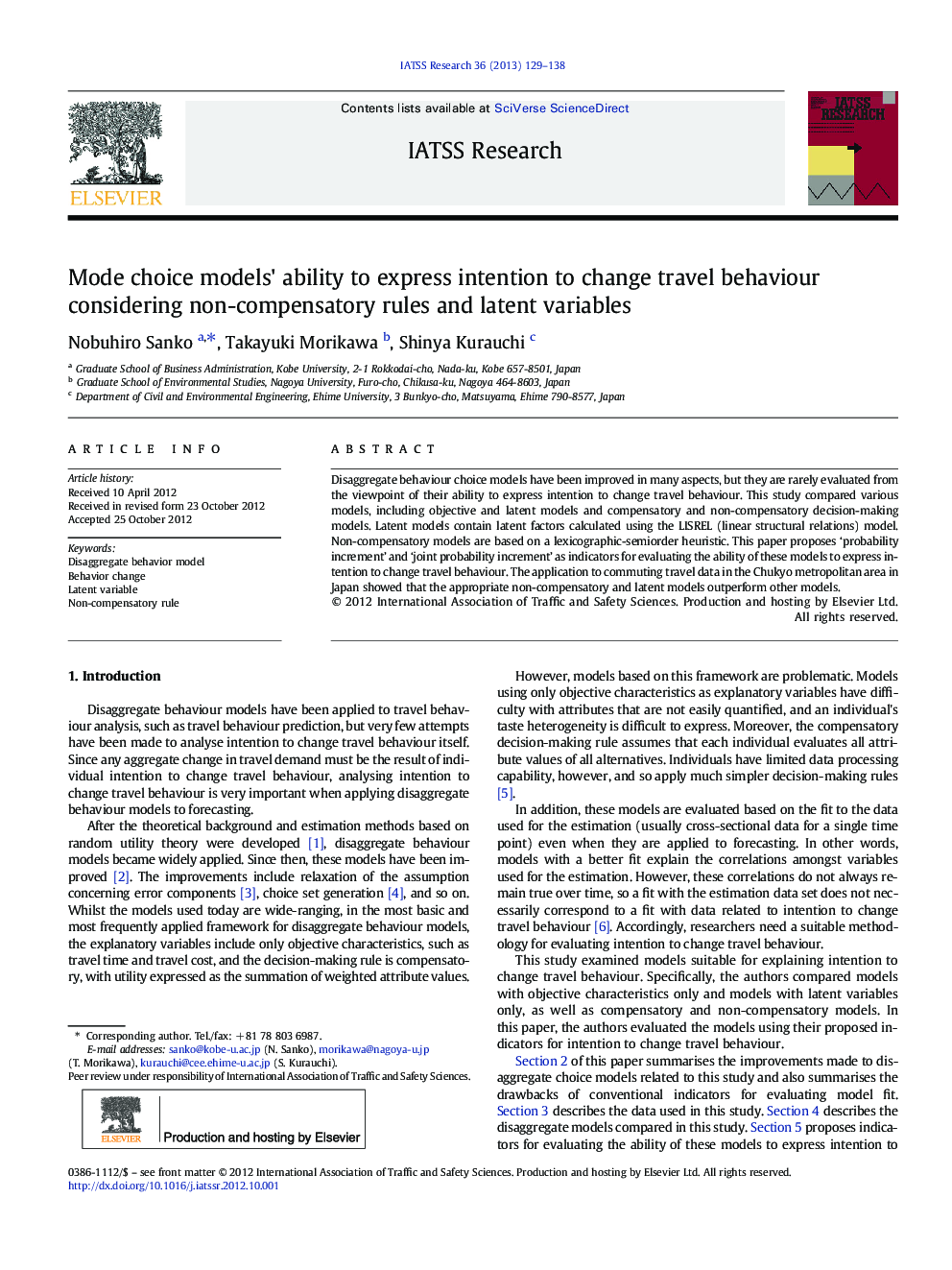| Article ID | Journal | Published Year | Pages | File Type |
|---|---|---|---|---|
| 1104664 | IATSS Research | 2013 | 10 Pages |
Disaggregate behaviour choice models have been improved in many aspects, but they are rarely evaluated from the viewpoint of their ability to express intention to change travel behaviour. This study compared various models, including objective and latent models and compensatory and non-compensatory decision-making models. Latent models contain latent factors calculated using the LISREL (linear structural relations) model. Non-compensatory models are based on a lexicographic-semiorder heuristic. This paper proposes ‘probability increment’ and ‘joint probability increment’ as indicators for evaluating the ability of these models to express intention to change travel behaviour. The application to commuting travel data in the Chukyo metropolitan area in Japan showed that the appropriate non-compensatory and latent models outperform other models.
► Evaluated mode choice models' ability to express intention to change behaviour. ► Evaluated both compensatory/non-compensatory models. ► Evaluated models including objective (or latent) variables only. ► Proposed indexes to evaluate the ability to express intention to change behaviour. ► Showed higher performance of appropriate non-compensatory and latent models.
